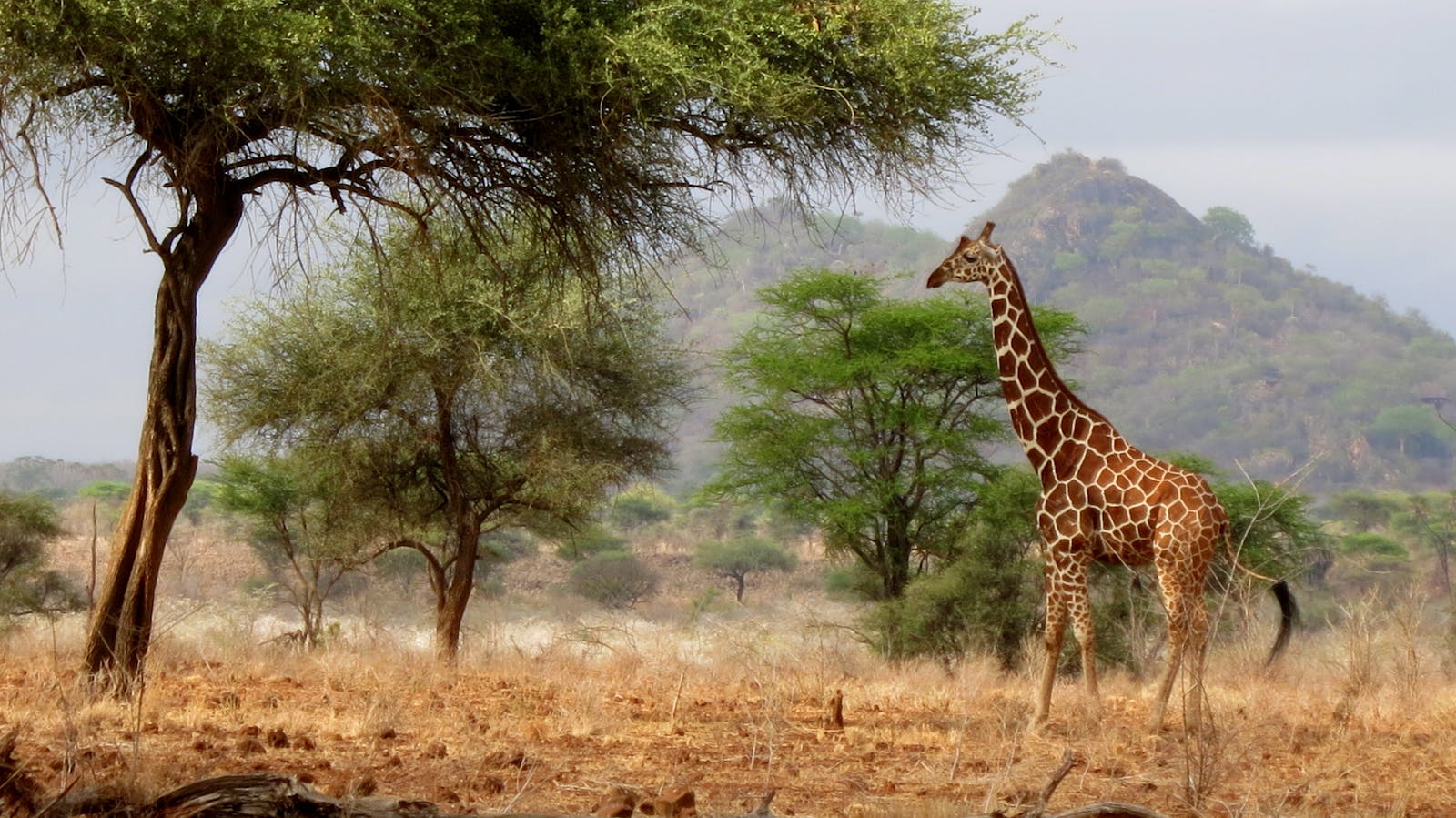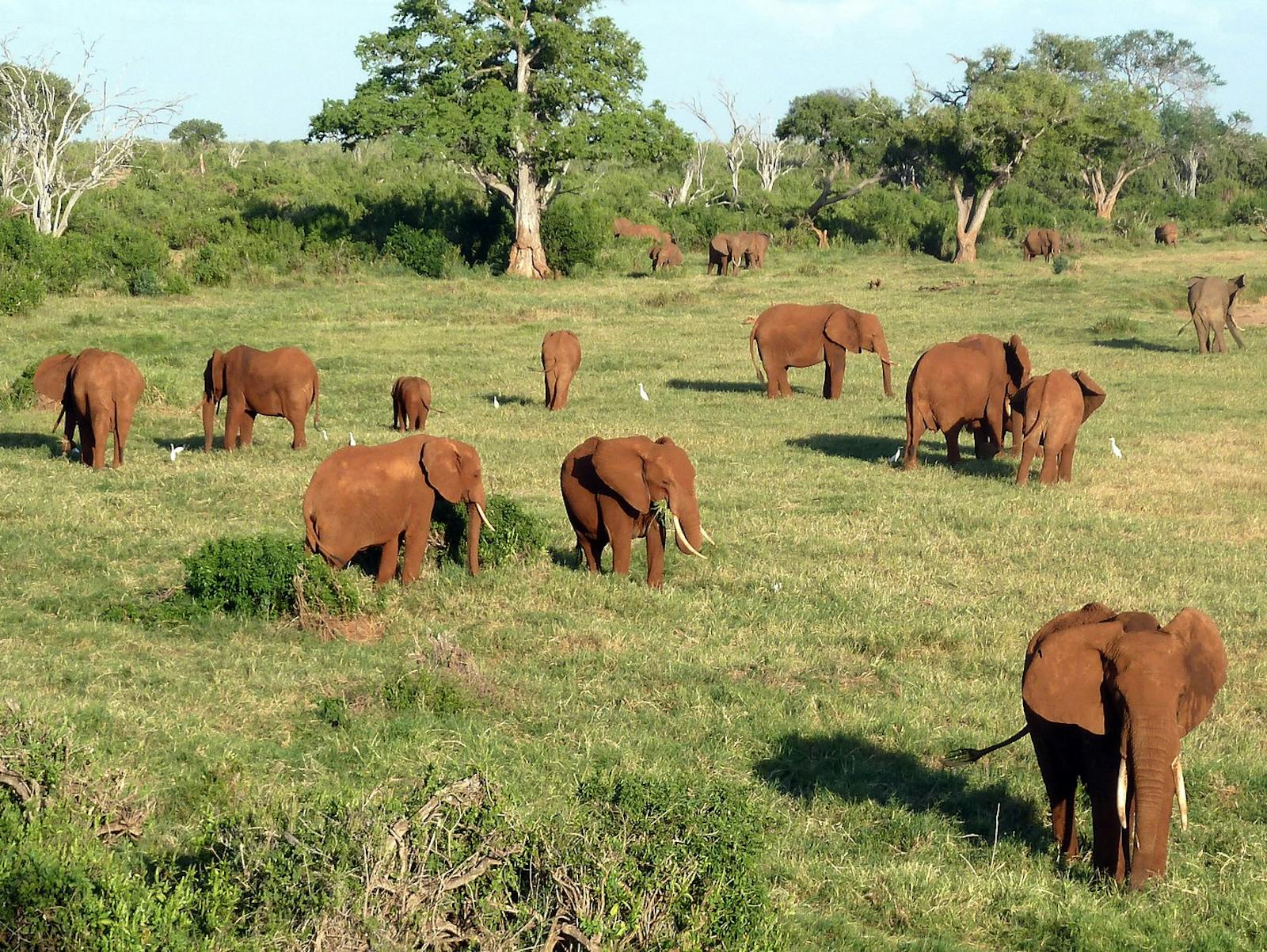Northern Acacia-Commiphora Bushlands and Thickets
The ecoregion’s land area is provided in units of 1,000 hectares. The protection goal is the Global Safety Net (GSN1) area for the given ecoregion. The protection level indicates the percentage of the GSN goal that is currently protected on a scale of 0-10.
Bioregion: Lake Turkana-Sudd Grasslands, Bushlands & Forests (AT21)
Realm: Afrotropics
Ecoregion Size (1000 ha):
36,726
Ecoregion ID:
51
Conservation Target:
20%
Protection Level:
9
States: Kenya, South Sudan, Uganda, Tanzania
The Grevy’s zebra has experienced one of the most significant range reductions of any African mammal. This arid-adapted ungulate, now restricted to the Horn of Africa in this ecoregion, previously inhabited a much larger region. The primary cause of their decline is from competition with livestock for the limited water supply, as well as from poaching. The larger herbivores, black rhinoceros and African elephants, are also heavily threatened by poaching in this ecoregion.
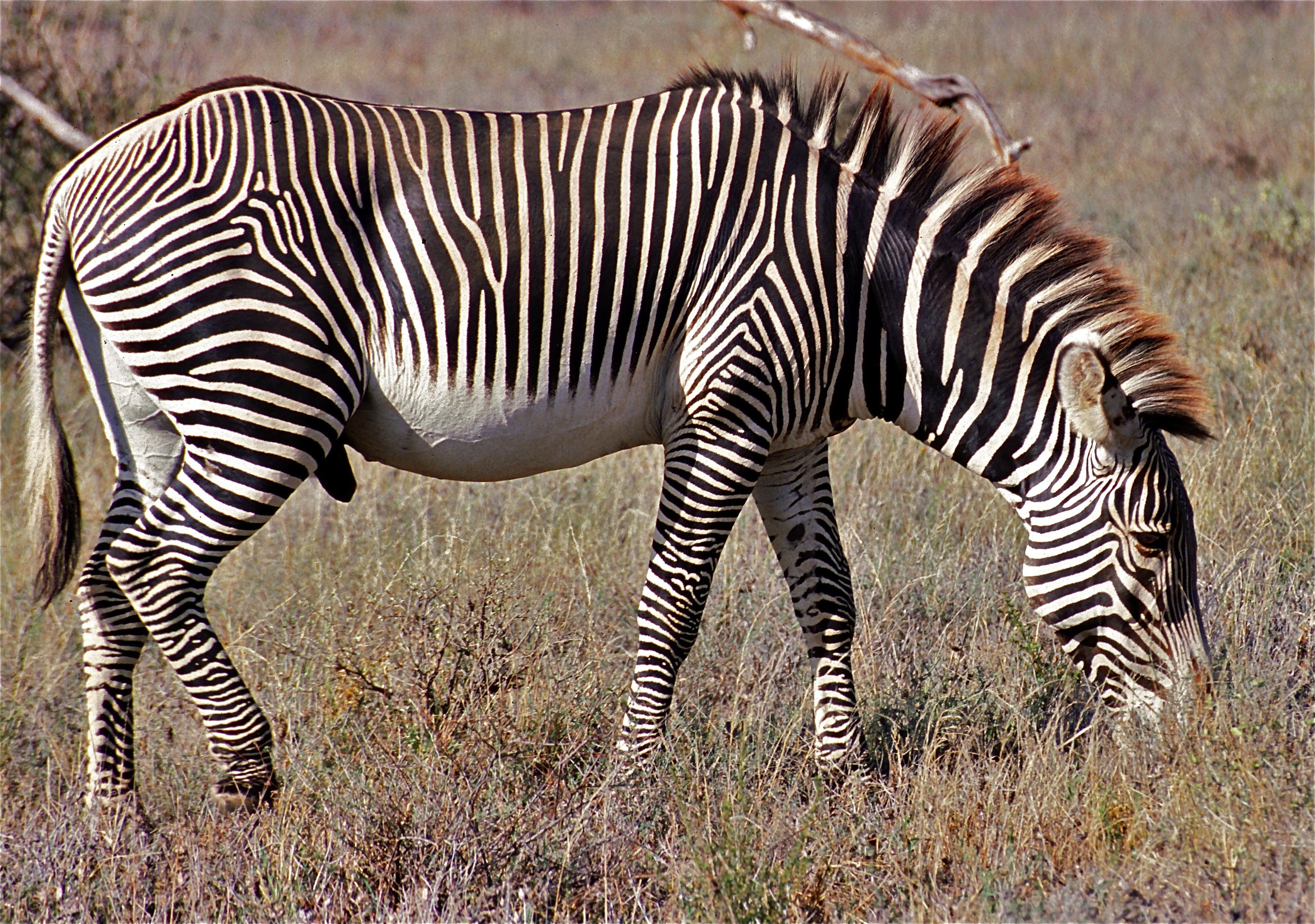
The flagship species of the Northern Acacia-Commiphora Bushlands and Thickets ecoregion is Grevy's zebra. Image credit: Creative Commons
The ecoregion extends from the southeast corner of Sudan and northeast Uganda, through much of lowland Kenya, reaching as far as the border with the Northern Swahili Coastal Forests. The ecoregion falls within the seasonal tropics, with seasonality controlled by movement of the Inter Tropical Convergence Zone. Mean maximum temperatures are 30°C in the lowlands, falling to around 24°C in the higher elevations. Mean minimum temperature ranges from 18 to 21°C.
Annual rainfall ranges from 200 mm in the drier areas near Lake Turkana, to about 600 mm closer to the Kenyan Coast. Most precipitation falls in the long rains, typically from March to June, with less falling during the short rains of October to December. The amount of rainfall varies greatly from year to year, and it is not uncommon that one, or both, rainy seasons fail. In northern Kenya and South Sudan, there is typically one rainy period per year.
During drier periods the desiccated vegetation becomes highly flammable and large parts of the ecoregion burn every year. The vegetation is predominantly Acacia-Commiphora bushland and thicket. Common plant genera include Acacia, Commiphora, Boswellia, Aristida, Stipa, and Chloris grasses.
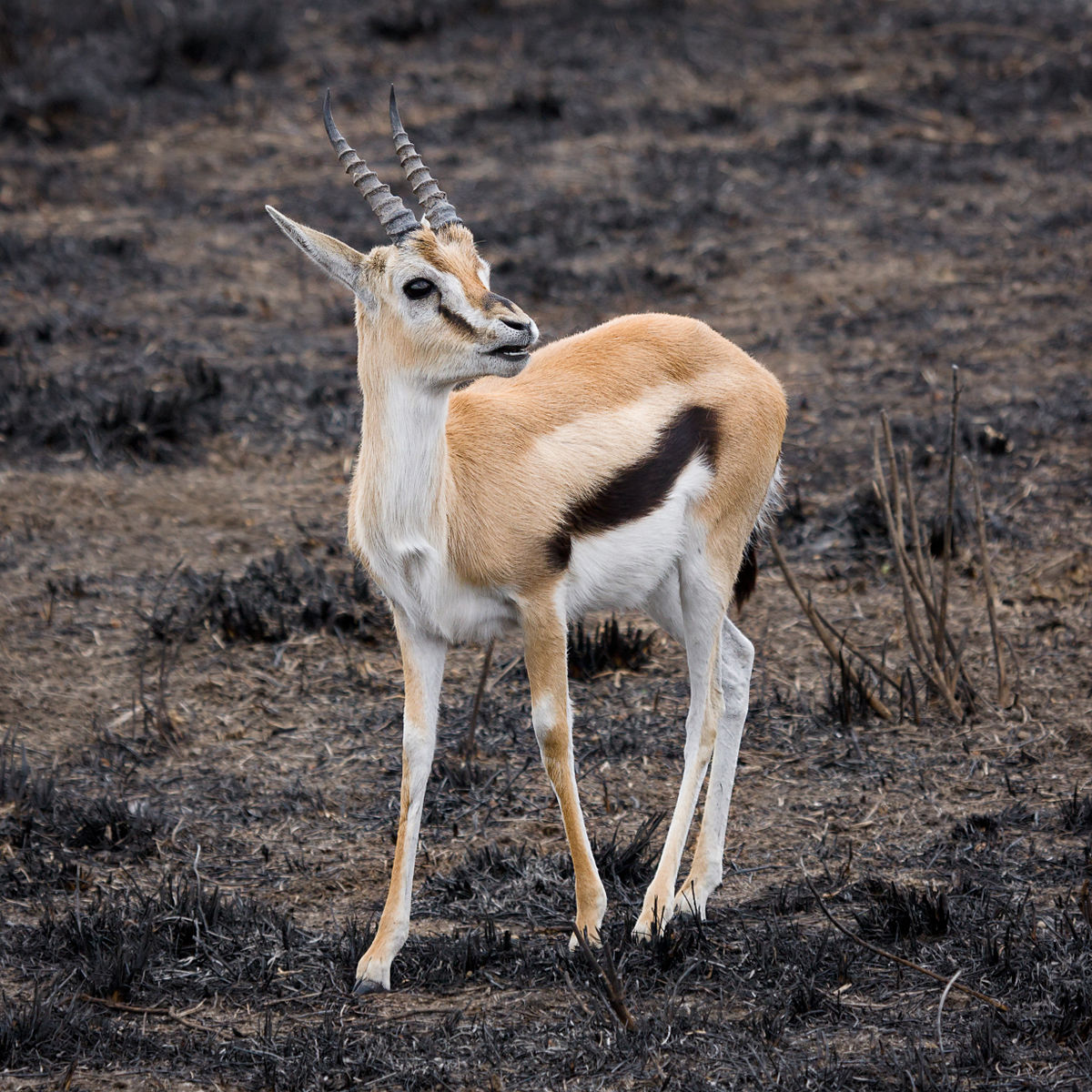
Serengeti Thomson gazelle. Image credit: Creative Commons
This ecoregion is part of the Somali-Masai regional centre of endemism. Mammalian species diversity in this ecoregion is high, but there are few endemics, all rodents: Cosens’ gerbil, diminutive gerbil, Percival’s gerbil, and Loring’s rat. The highly threatened antelope, hirola occurs as a small introduced population in Tsavo National Park.
The ecoregion also supports several species of arid-adapted ungulates: Grevy’s zebra, beisa oryx, gerenuk, and lesser kudu. Between 1975 and 1980, elephant numbers in Tsavo National Park declined from nearly 35,000 to about 14,000 due to a period of drought followed by heavy poaching. In 2012, the elephant population consisted of 12,182 individuals. Of an estimated 65,000 black rhinos present in East Africa in the 1960s, only about 630 now remain in Kenya.
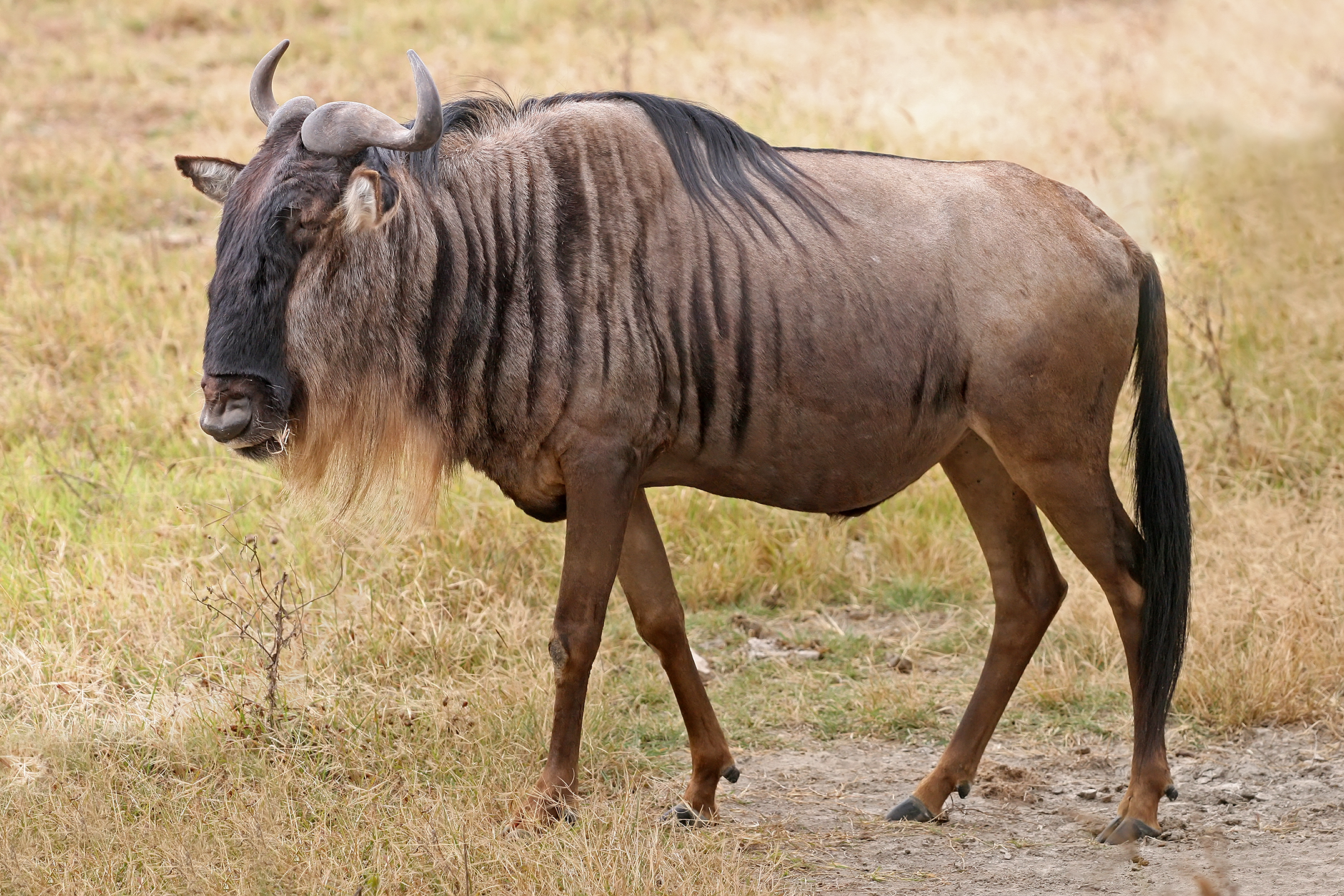
Blue wildebeest. Image credit: Muhammad Mahdi Karim, Creative Commons
Wild dogs also occur, but have declined greatly and are extirpated from many regions where they once inhabited. Other large carnivores include lion and cheetah and there are important populations of reticulated and Masai giraffe. One threatened reptile is the pancake tortoise which is overexploited for the pet trade.
Large areas of habitat still remain, many of which are found in a number of well-functioning national parks and other reserves in this ecoregion. Protected areas in Kenya include South Turkana and Samburu National Reserves and a number of national parks: Meru, Kora, Amboseli, Chyulu Hills, Tsavo East and West. In Tanzania, Lake Natron Game Controlled area and Mkomazi National Park are within this ecoregion, and in Uganda, the Bokora corridor connects Matheniko and Pian Upe Wildlife Reserves. In Kenya, private ranches, sanctuaries, and conservancies, including Biliqo-Bulesa and Kalama, also support important wildlife populations.
The habitats and species of this ecoregion are increasingly threatened by unsustainable water use, frequent grassland burning, tree cutting, and farmland expansion. Illegal hunting for skins, ivory, and rhino horn have also severely reduced populations of large animals, particularly elephants and rhinoceros.
Throughout the ecoregion, cutting of trees for firewood and charcoal production is a major threat to the maintenance of the Acacia-Commiphora bushland and thicket. Some plant species, such as the African blackwood are also threatened by over-harvesting. The human dominance of standing waterholes and springs as well as the diversion of rivers poses serious threats to wildlife, particularly the upstream extraction from the Ewaso Nyiro River for food and flower production.
The priority conservation actions for the next decade will be to: 1) enforce markets of ivory and decrease the demand to reduce black market ivory prices and prevent illegal killing of wildlife; 2) implement low cost, locally implemented water management techniques including soil moisture retention practices; and 3) expand alternative livelihoods including wildlife tourism.
Citations
1. Burgess, N., Hales, J.A., Underwood, E., Dinerstein, E., Olson, D., Itoua, I., Schipper, J., Ricketts, T. and Newman, K. 2004. Terrestrial ecoregions of Africa and Madagascar: a conservation assessment. Island Press.
2. Wittemyer, G., Northrup, J.M., Blanc, J., Douglas-Hamilton, I., Omondi, P. and Burnham, K.P. 2014. Illegal killing for ivory drives global decline in African elephants. Proceedings of the National Academy of Sciences. 111(36), pp.13117-13121.
3. Northern Rangelands Trust. 2016. NRT Centre Operational Plan 2016. [Online]. [Accessed 28 February 2018]. Available from:https://static1.squarespace.com/static/5653e896e4b0a689b3fafd97/t/570205e527d4bdaccf395ead/1459750431004/NRT+Centre+OpPlan.pdf
4. European Commission. 2016. Larger than elephants: Inputs for an EU strategic approach to wildlife conservation in Africa – Regional Analysis. Brussels, Belgium: European Union.
